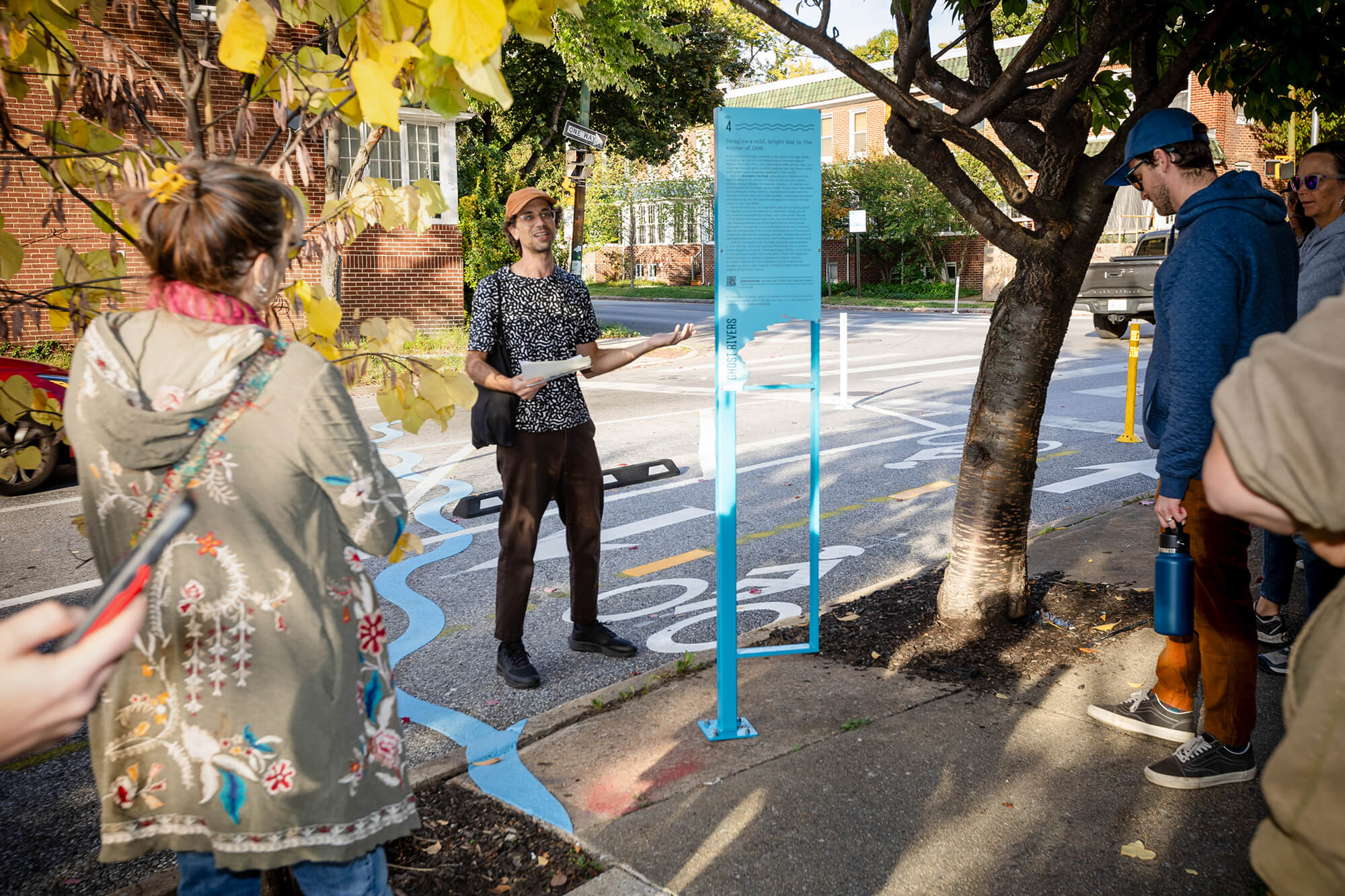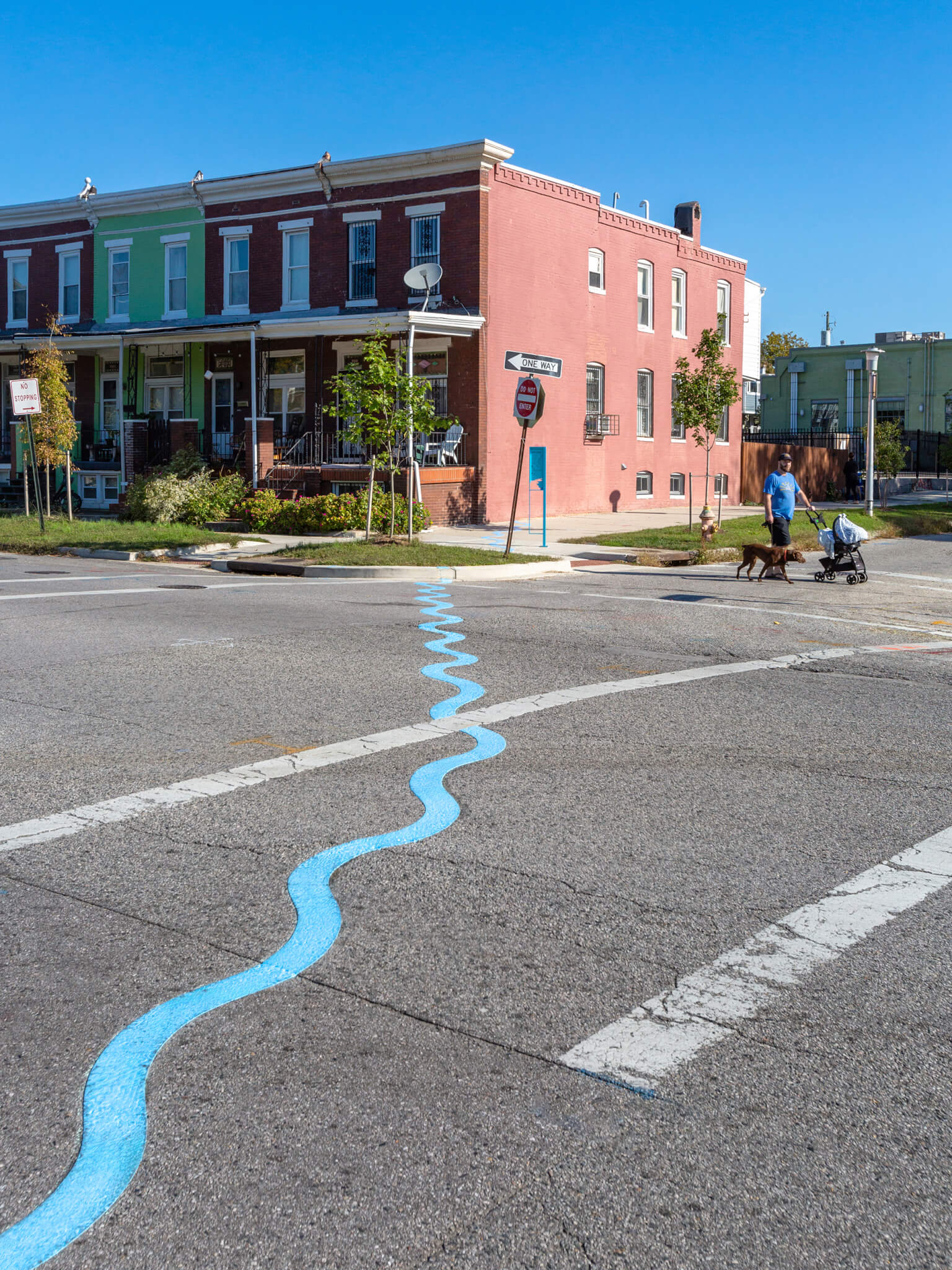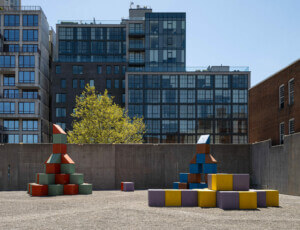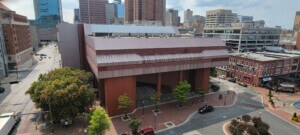Rivers and streams flow beneath the city streets of Baltimore—invisible to the naked eye but persistent despite the relentless forces of industrialization which spackled Baltimore’s natural resources with concrete, asphalt, et al for over a century.
A new, 1.5-mile-long, multi-site art installation by Baltimore artist Bruce Willen traces this natural history and places it on view for the public. Willen’s piece Ghost Rivers is a neighborhood-spanning public art piece that places installations, wayfinding markers, and text revealing the hidden path of Sumwalt Run, a creek that was lost in 1905 when Baltimore officials laid out the city’s sewage system. Ghost Rivers’ ethos is about bringing lost landscapes and histories to the surface, the artist said in a press statement. Its texts string together Baltimore’s social and natural history between early industrialization and the present.

In total, there are twelve sites that run north to south in Baltimore, not far from Johns Hopkins University. The first site in Baltimore is on Charles Street at Wyman Park Del. The second is at Wyman Park Del on 29th Street; Howard Street is the third site following the location of former creek until the final, twelfth site, at Jones Falls, not far from the North Avenue Light Rail station. The trail is peppered with art works and descriptive essays that inform visitors about the creek.

Urban legends say that Sumwalt Run was filled in by debris from the Great Baltimore Fire of 1905. Shortly after, blocks of row houses, roads, and factories were built on top of it; and the creek itself existed only in Baltimore’s collective memory. Frederick Law Olmsted’s 1904 park plan for Baltimore tried conserving parts of Sumwalt Run by converting it into a greenway; a plan that was stymied by real estate developers.

“When Baltimore built a new sewer system in the early 1900s, Sumwalt Run was turned into a buried storm sewer, vanishing from the landscape and disappearing from memory,” Willen continued. “The stream now flows hidden and mostly forgotten through storm sewers beneath the Remington and Charles Village neighborhoods. You can catch echoes of its waters whispering from certain storm drains.”
The artist further emphasizes how, before Sumwalt Run was hardscaped, it played an important role in Baltimore’s social history. Ice vendors chipped away at the creek in wintertime which supplied commercial ice operations for city vendors. Trolley tracks even crossed the ravine, connecting workers to the factories downtown.
Ghost Rivers brings this history back to life. It opened to the public on October 19.











